Volume 1, Issue 1
Displaying 1-4 of 4 articles from this issue
- |<
- <
- 1
- >
- >|
-
1997 Volume 1 Issue 1 Pages j1-j12
Published: 1997
Released on J-STAGE: July 21, 2010
Download PDF (1497K) -
1997 Volume 1 Issue 1 Pages preface1
Published: 1997
Released on J-STAGE: July 21, 2010
Download PDF (44K) -
1997 Volume 1 Issue 1 Pages j13-j25
Published: 1997
Released on J-STAGE: July 21, 2010
Download PDF (1387K) -
1997 Volume 1 Issue 1 Pages j27-j38
Published: 1997
Released on J-STAGE: July 21, 2010
Download PDF (1294K)
- |<
- <
- 1
- >
- >|
